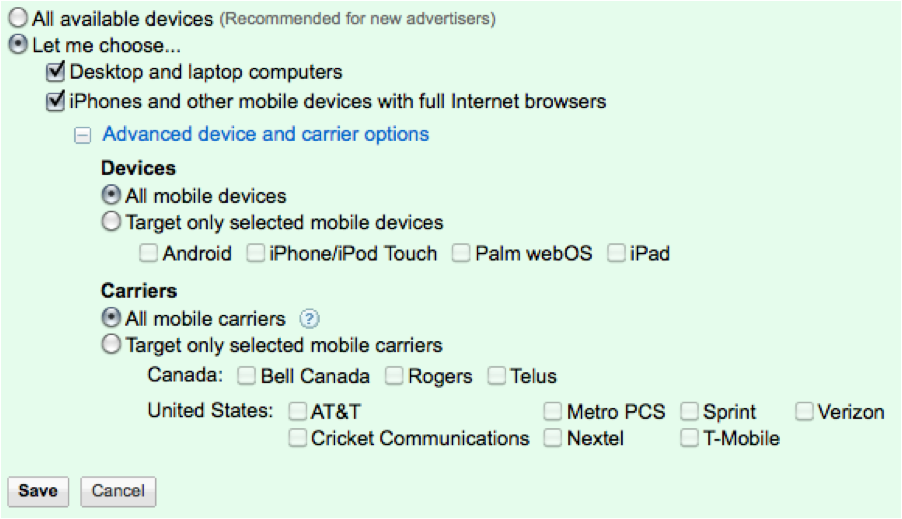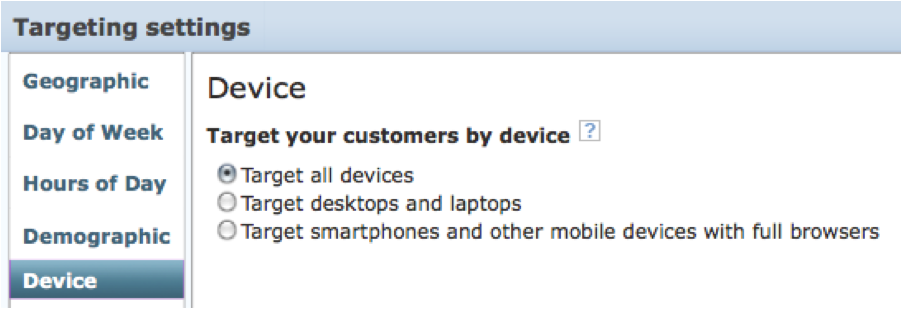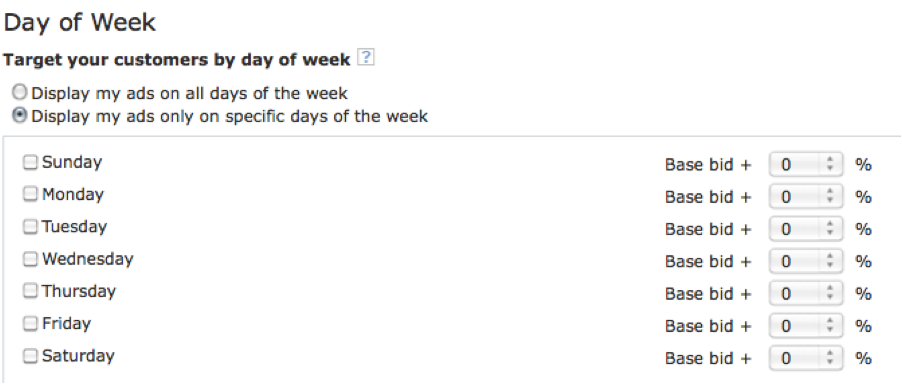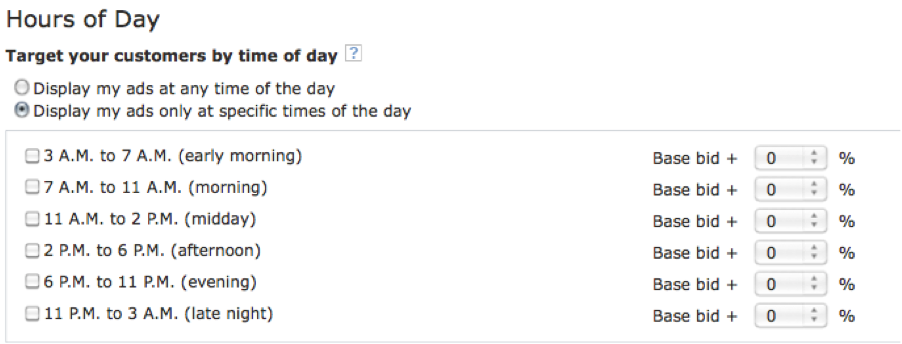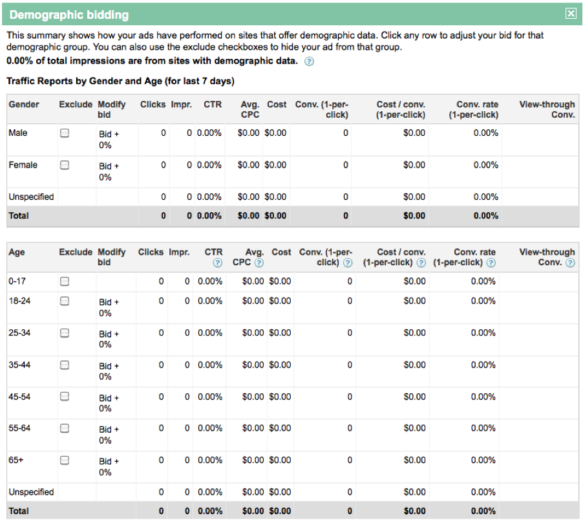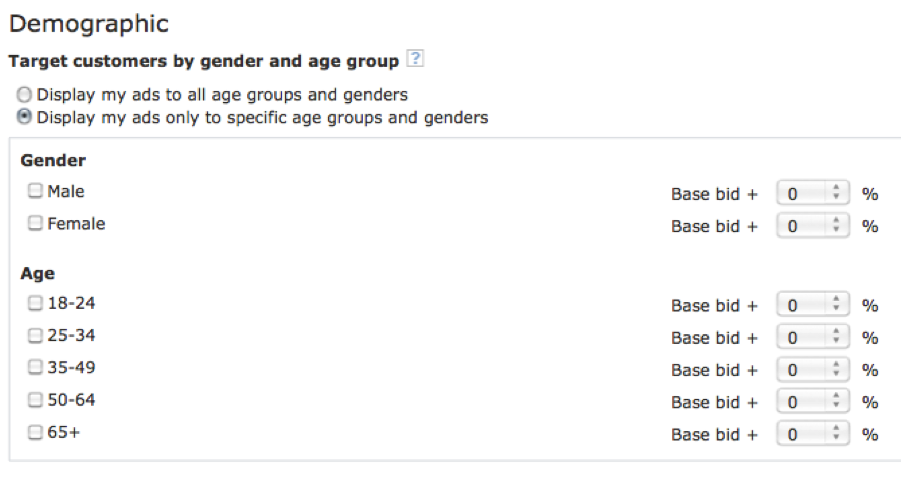This is the second of a 2-part blog post comparing targeting features in AdWords and adCenter. The first post focuses on Language and Location targeting. Part two covers targeting by Device, Time of Day/Day of Week, and Demographics.
Last month I wrote about the differences between the Language and Location targeting settings in Google AdWords and Microsoft adCenter. This post will walk you through a comparison of the last three targeting features: Device, Time of Day/Day of Week, and Demographics. By the time you finish reading this post you will be able to begin further refining your PPC campaigns to target your optimal market.
Device Targeting
Targeting by device allows you to choose whether you want your ads to display on desktop and laptop computers, mobile devices with full browsers, or both. Don’t confuse this setting with ads showing to WAP mobile phones, as the device setting will not affect mobile ads.
Google AdWords: Devices
In Google, device targeting is set at the campaign level. Campaigns are automatically set to target all available devices by default since users typically search on both the same way. Lately though we have been experimenting with separating out computer and full browser mobile devices into different campaigns.
Google also offers advanced device and carrier options to further refine your targeting. These options allow you to further drill down to target just one device or just one carrier. (Click on an image to enlarge.)
You should note that even though device settings won’t affect WAP mobile ads, the carrier setting will. So if you select AT&T your ads will only be shown on full browser mobile and WAP mobile devices that use AT&T.
Microsoft adCenter: Device
In MSN, device targeting can be set at the campaign and ad group levels. Remember, ad group settings trump campaign settings. You get the same three basic targeting options but there are currently no advanced options available.
Another difference between the two search engines is that device targeting in adCenter only applies to text ads on the search and content networks. With Google, you can target both text and image ads by device.
Time of Day/Day of Week Targeting
You can further target ads by scheduling them to show at certain hours of the day or certain days of the week. You can also display your ads at all hours but change bids at certain times. This feature is especially valuable for accounts with limited budgets as you can better target your spend and peak conversion times.
Google AdWords: Ad Scheduling
Ad Scheduling is available under Advanced Settings on the Campaign Settings page. By default, your ads will show for all days at all hours of the day. You can adjust ad scheduling using either the basic mode of the bid adjustment mode. The basic mode turns ads on and off while the bid adjustment mode is where you can increase or decrease your bids.
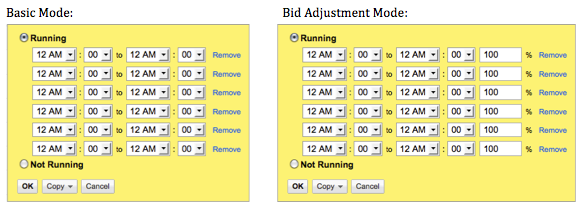 You can set a maximum of six time periods and the time is set in 15-minute increments. For bid adjustments, you can set a bid multiplier from 10% to 1000% of the original bid. If you switch from the bid adjustment mode back to basic mode your time settings will be saved, but bids settings wont.
You can set a maximum of six time periods and the time is set in 15-minute increments. For bid adjustments, you can set a bid multiplier from 10% to 1000% of the original bid. If you switch from the bid adjustment mode back to basic mode your time settings will be saved, but bids settings wont.
Microsoft adCenter: Target by Day of Week/Hours of Day
Ad scheduling in adCenter can be done at the campaign or ad group levels. To tell MSN what days to show your ads, just check the box next to each day. You can then set incremental bid changes for each day your ads run. If you leave a box unchecked your ads will not run during that day. Unlike Google, you can only increase your bids by 0 to 100 percent and only in increments of 10 percent. There is not as much room for bid flexibility in adCenter.
Looking at the hours of day option box you can already see some major differences between MSN and Google. MSN has preset time periods in which you can run ads or increase bids. These settings will also apply to all days of the week in which your ads are running. For example, you cannot increase bids by 50% in the afternoon for Monday and increase it 30% in the afternoon on Tuesdays.
So while you gain flexibility by being able to target each ad group individually, you lose flexibility when it comes to settings the hours and bid increments you want.
*Time Zone*
I want to draw special attention to the different way time zones affect ad scheduling in each search engine, because it will influence how you target your ads.
In Google, ad scheduling is based on the time zone you have set for your account. Keep in mind that if you are targeting people in another time zone than the time zone of your account your ads will show to them at different times. For example, if you are targeting a person in time zone 4 hours ahead of your account time zone and you schedule ads to run from 1:00 pm to 4:00pm the user will see them from 5:00pm to 8:00pm.
MSN ad scheduling it is the exact opposite. Ad scheduling is based on the location of the user, determined by IP address. In this case, no matter where a user is located, they will see your ads when it is 1:00pm to 4:00pm in their time zone. So remember: Google – account time zone, MSN – user time zone.
Demographic Targeting
Demographic targeting allows you to choose to show your ads to users of a certain gender or age range. This can be helpful if you have a very specific target market for your products.
Google AdWords: Demographic Bidding
Demographic targeting is only available for campaigns opted into the Google Display Network. It also only works on sites that collect demographic information such as social networking sites. When you click Edit next to demographic bidding a window will pop up showing your performance in each demographic over the last 7 days.
You can exclude certain groups you don’t want your ad to show for or increase bids for a selected demographic. You can increase bids up to 500% of the original bid. If your ad is eligible to show on a site that does not collect demographic information these targeting settings will be ignored.
Microsoft adCenter: Target By Gender and Age
You can target customers by demographics not only at both the campaign and ad group levels, but also on the search and content networks in MSN. The demographic data used comes from information reported by MSN customers.
Your options for demographic targeting are similar to Google’s with some slight variation in the age ranges. You also do not have a box to exclude the 0-17 age range in MSN. If you don’t want to target 0-17 year olds you have to select all the available age ranges. You can also increase bids to certain demographic groups but only by increments of 10, up to 100% of the original bid.
This concludes our look at the differences between targeting options in Google AdWords and Microsoft adCenter. Have you had any success using these targeting features? If so, or if you have any questions, let us know below!



